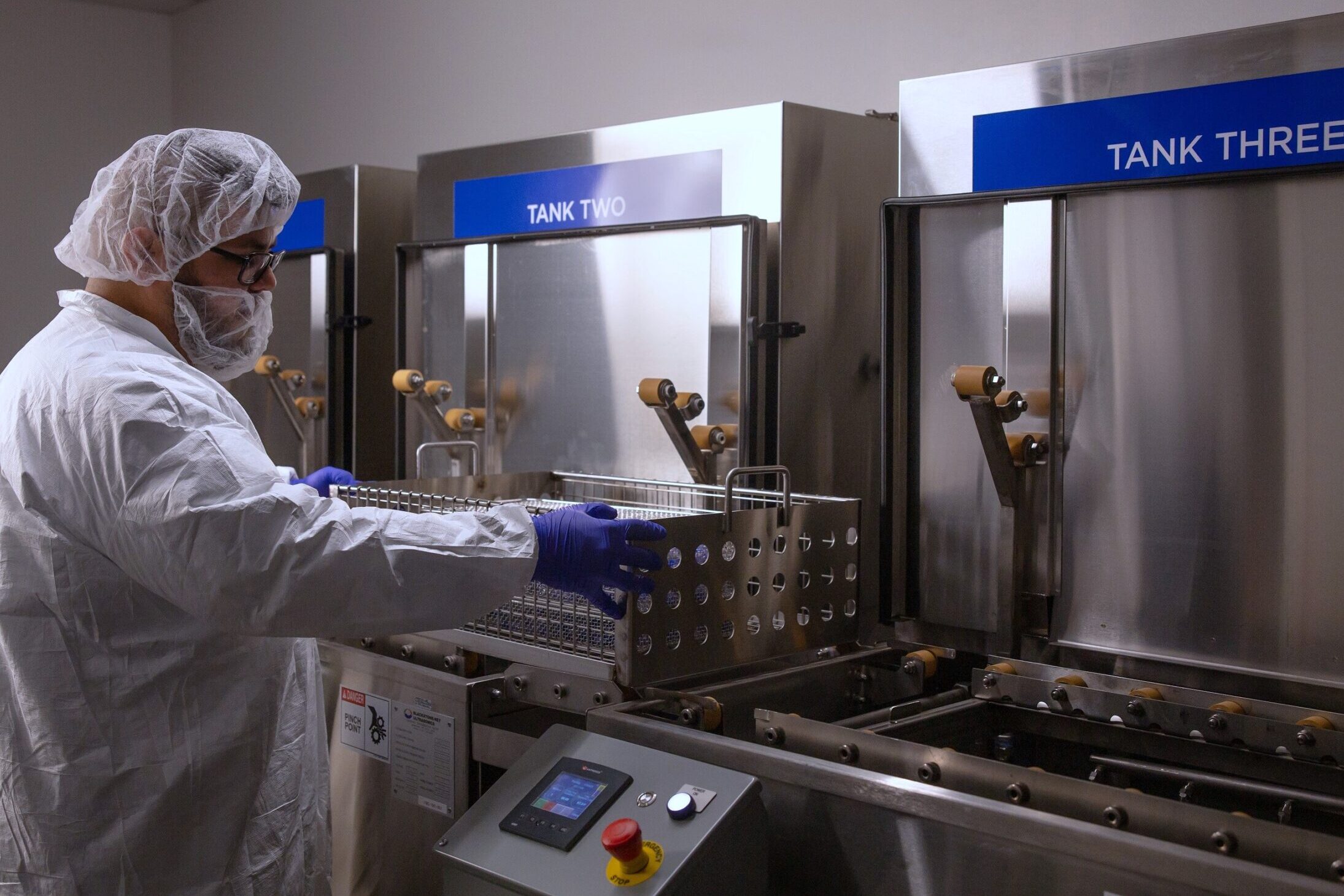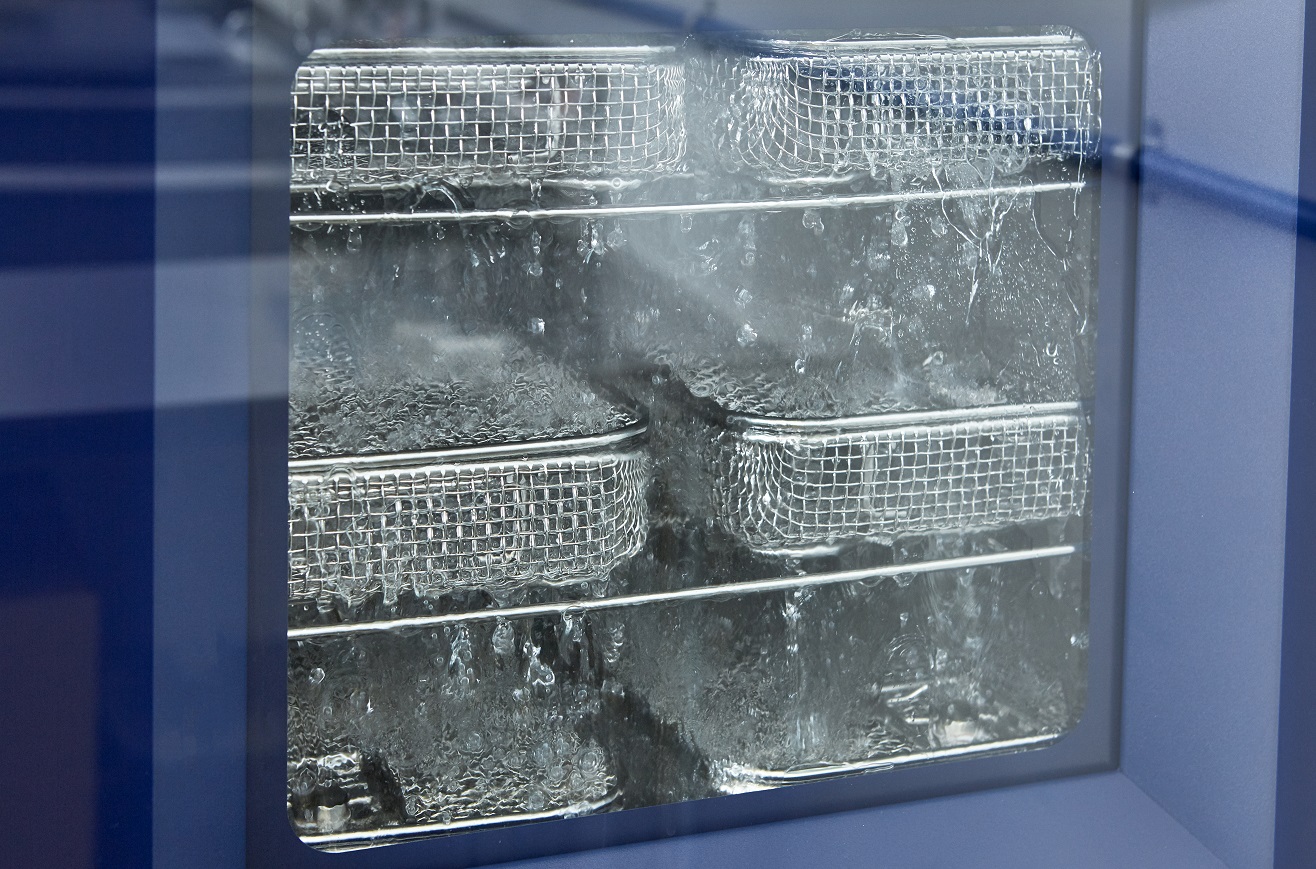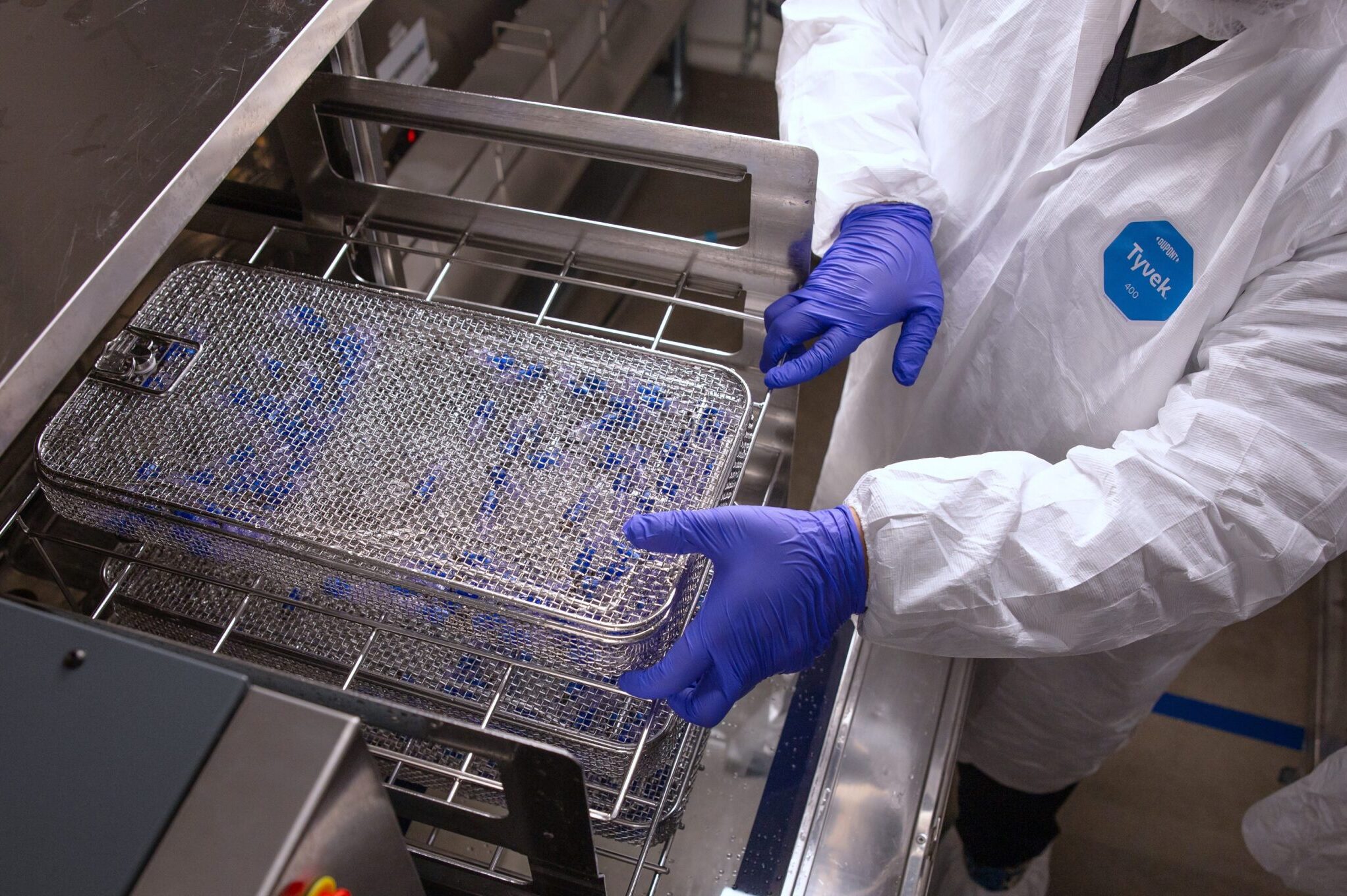
Medical Device Precision Cleaning
PCL can help you evaluate whether your medical device may need a formal cleaning process before clean room packaging and sterilization. If your device requires a cleaning step, PCL will assist in determining the appropriate cleaning method/s for your cleaning validation and routine cleaning processing. PCL offers precision cleaning solutions, including parts washing and ultrasonic cleaning.

PCL will manage cleaning validation activities, author cleaning protocol, execute protocol, and coordinate testing and exposures. A typical cleaning validation test plan may include many of the following micro tests:
- Cytotoxicity
- Pyrogenicity
- Total Organic Carbon
- Gravimetric
- Inhibition & Enhancement
- Bioburden
- Bioburden Recover Efficiency
- Bacterial Endotoxin Testing

Types Of Cleaning
Offered at PCL
- IPA Wiping
- IPA Dip
- Parts Washing
- Ultrasonic Clean with IPA
- Ultrasonic Clean with Detergent
- Ultrasonic Rinse
Worst Case Medical Device Cleaning Considerations
Before being sterile packaged, are the parts coming in clean from the previous supplier?
If so, this helps with right-sizing!
Can a coupon be made to cover all materials, worst-case surface areas, and complex geometries to ensure you don’t have to re-validate your cleaning process for all different types of products with variable features?
If parts are NOT cleaned before being packaged, what contact materials are used during manufacturing?
It is helpful to see the process flow from previous suppliers to identify any contact materials. In other words, if
parts are molded using CNC coolants or a mold release is applied, that is good information to have during testing.
This factors into the Total Organic Carbon/Total Hydrocarbon (TOC/THC) test that looks for lubricants, to help
drive a certain value in safety data sheets. It enables us to create protocols that ensure any presence detected is well below the max. By knowing what the product encountered before arrival at the testing lab we have a greater context for optimal recommendations
Did the original supplier use any water in the cleaning process?
If YES, was the water source deionized or otherwise monitored?
If YES, the water was monitored, is routine LAL (Limulus Amebocyte Lysate) testing performed regularly?
Is testing done from the water source or on the finished cleaned product?
If YES and no LAL testing is performed, regular lot release testing for LAL may be required.
If YES and LAL testing is performed, you could potentially justify out-of-routine LAL testing.
Does the introduction of their contact material present a risk to Packaging Compliance Labs (PCL) cleaning line that is used with other customers?
Operational Qualification (OQ) tests the low and high limits for temperature, detergent concentrations, and
dwell times for a designated load. Performance Qualification (PQ), on the other hand, tests the nominal (middle) range where the process will typically operate and ensures repeatability. For OQ, we provide recommendations based on the equipment and the customer’s specific requirements. For most devices made with commonly used materials like stainless steel and titanium—prevalent in medical device manufacturing—we can guide the goals effectively.